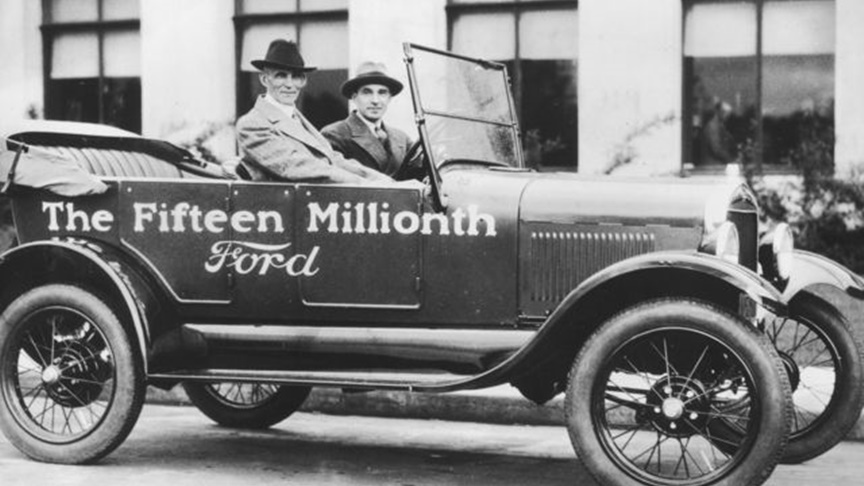Ford is now one of the largest automobile companies in the world. It all began when Henry Ford launched the Ford Motor Company in 1903 when he was 40 years old. At the time, he only had 12 people working with him. Since then, Ford has become a major force not just in the automotive industry, but in the world economy.
Ford has introduced numerous innovations to its production line and created a series of iconic vehicles, including the Mustang. Keep reading to find out how Ford became the company that it is today.
The “Perfect Machine”
This is a photo of Henry Ford’s first car. He built this vehicle in 1896 while he was living in Dearborn, Michigan. This car was a gasoline-powered buggy that had an 8 HP engine. Ford called the vehicle a Model A, and it was billed as “the most perfect machine on the market, which even a 15-year-old boy is able to drive”.

Ford created several versions of this car and named the models with the letters A through S. The process of creating the perfect car to sell to the public involved a lot of trial and error.
The Famous Ford Assembly Line
Ford’s Assembly line was actually inspired by a visit to the slaughterhouse. It was 1913 and Ford was spending some time watching butchers work. he noted the way the meat was passed from one worker to another. On October 7, 1913, Ford Motor Co.’s Highland Park plant in Michigan officially launched the first moving assembly line in the world.
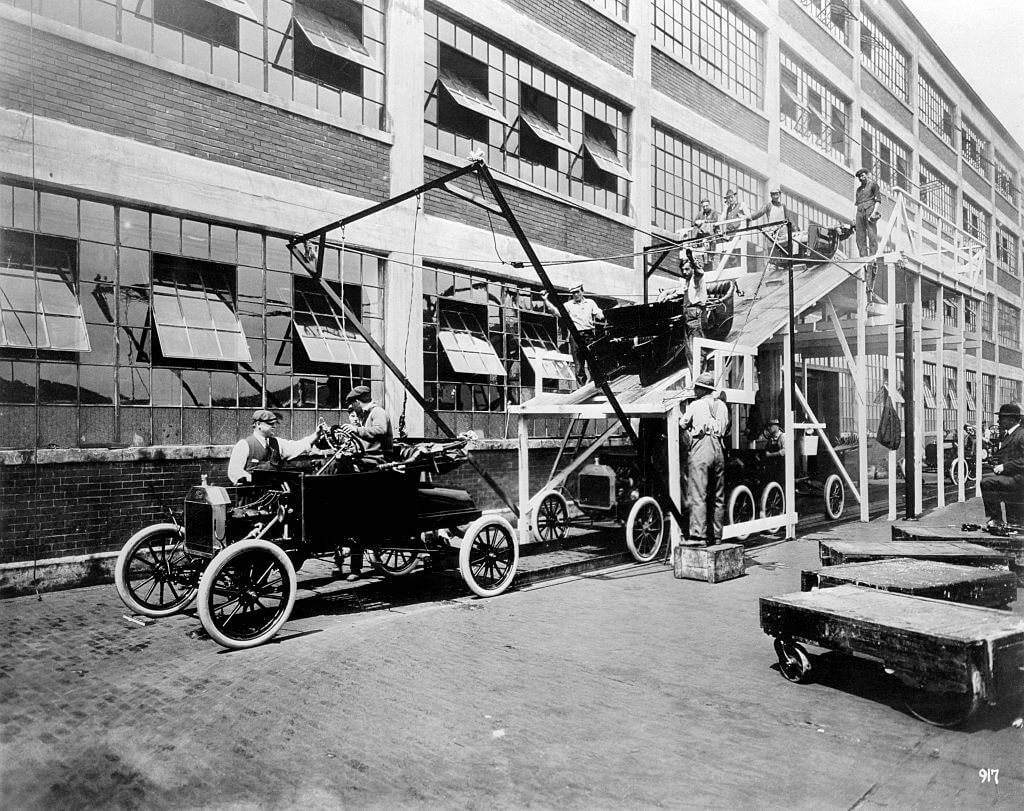
The photo above shows how the bodies of the vehicles were drawn down a wooden ramp and then lowered onto the chassis. Ford was the first business to mass-produce vehicles.
The Model T
Ford’s Model-T engines became some of the most popular cars in the world. In this photo, you can see Ford employees building one of their famous Model-T cars in 1914. Ford launched the Model T (also known as the Tin Lizzie) in 1908. The Model T initially sold for $850.
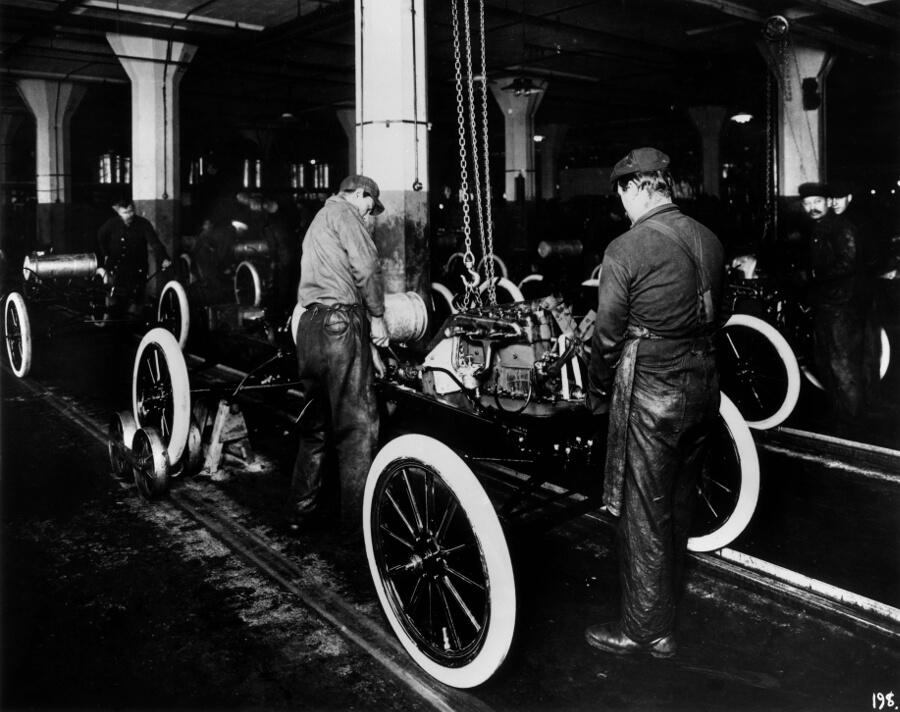
After producing more than 15 million Model Ts, Ford halted production on the model in 1927. Over ten thousand Model-Ts were sold to consumers during the car’s run.
The Peanuts Ford Commercial
Henry Ford enlisted the help of Charles M. Schulz Peanuts characters to help him sell his cars. In reality, being associated with Ford’s cars may have actually done more for the Peanuts than the Peanuts did for Ford.

The Perfect Getaway Car
Clyde (of Bonnie and Clyde fame) actually used a Ford car as his personal getaway car. he liked the car so much that he wrote a letter to Ford to express his gratitude.

In the letter he wrote, “While I still have got breath in my lungs I will tell you what a dandy car you make. I have drove Fords exclusively when I could get away with one. For sustained speed and freedom from trouble the Ford has got every other car skinned, and even if my business hasen’t been strickly legal it don’t hurt anything to tell you what a fine car you got in the V8.”
Paying His Workers Well
Ford treated his employees very well. He knew that happy employees were the key to running a good company. He made history when he implemented a shorter workday in his factories and self-imposed a minimum wage of $5 per day (which was double the then-current market salary).
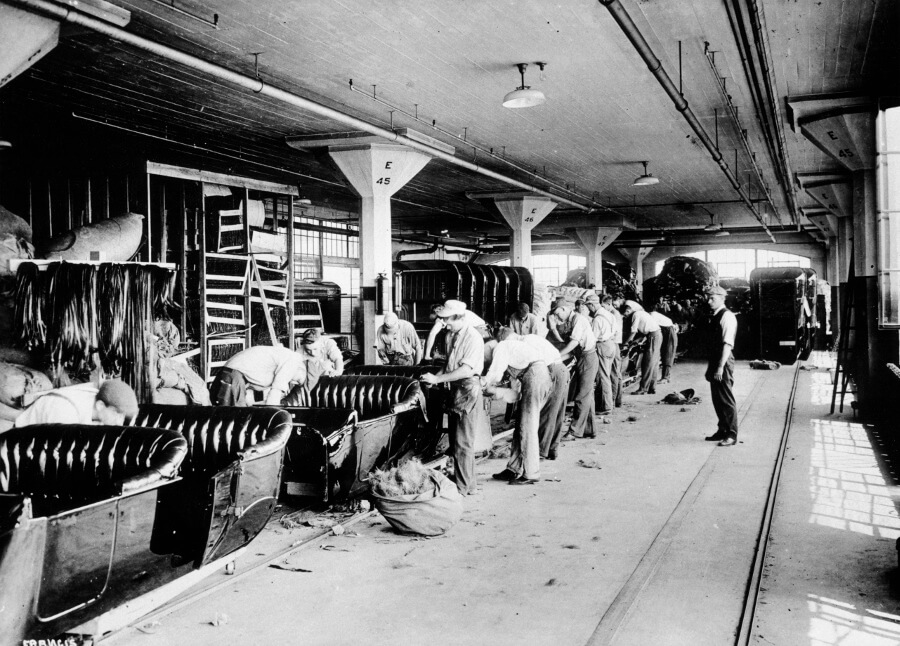
Before Ford came around, employers were paying their workers $2.34 for nine hours. While Ford only had 3,000 jobs available at its plant in Highland Park, 15,000 job seekers applied for the in-demand positions.
Thomas Edison’s Final Breath
Henry Ford and Thomas Edison were actually quite close. Before starting his own company, Ford actually worked for Edison at the Edison Illuminating Co. in Detroit as a chief engineer. Edison mentored Ford and passed along his fast technical and business knowledge.
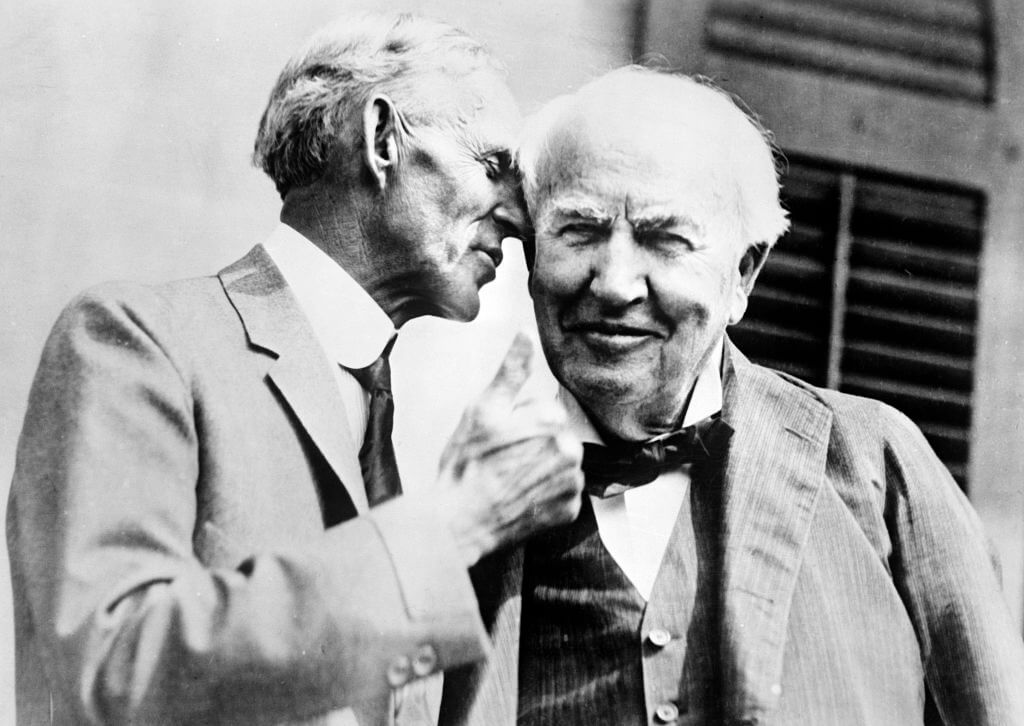
When Edison died in 1931, his son, Charles, was by his bedside. Apparent;y, Ford asked Charles to capture Edison’s last breath in a bottle. Ford kept that bottle by his bedside and fell asleep beside it every night.
Not Just Cars
Ford is best known for making cars, but the company actually manufactured other vehicles as well. This is a photo an automobile parked next to a Ford Tri-Motor Airplane. Ford Motor Co. got in the business of building airplanes during World War I because Ford wanted to do his part to support America’s troops in the war effort.
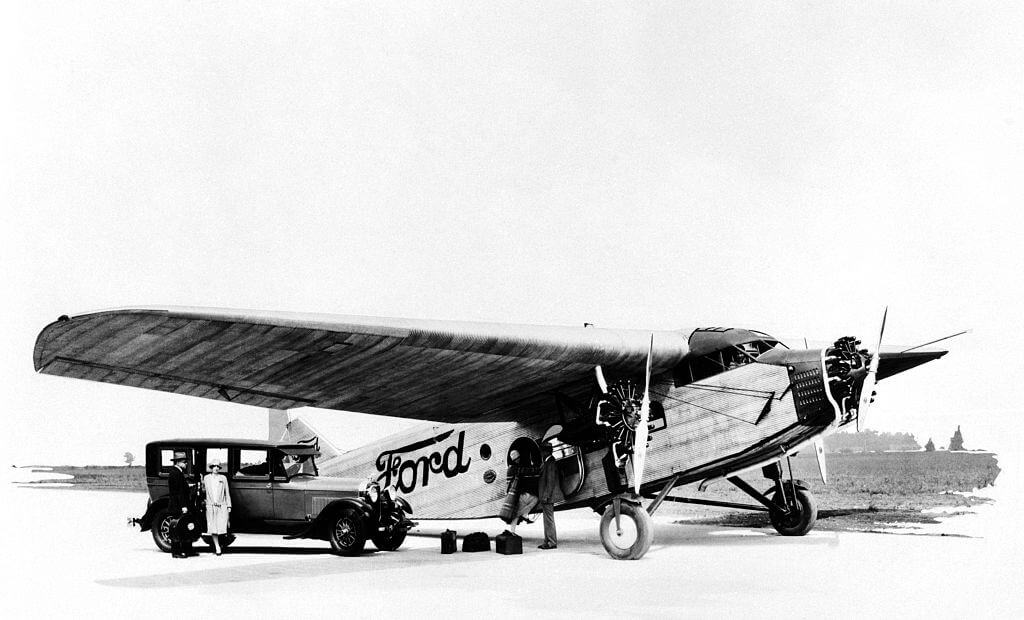
Manure To Power Ford Factories
Henry Ford was a bit ahead of his time when it came to being eco-friendly. Ford Motor Co. factories in the United States and England initially used both animal and human waste to power their facilities (it sounds gross, but it was a useful practice). Ford reportedly burned an estimated 2,000 pounds of manure each week.

The downside, of course, was the smell. However, the green practice was innovative during a period when few people worried about mankind’s effects on the environment. Ford discontinued the practice in 1939 when cheaper fuel alternatives became more readily available.
An Atomic-Powered Car
In 1957, Ford came up with a concept car dubbed the Nucleon. It was an atomic-powered vehicle and meant to represent the car of the future. Designers envisioned a package with consumers choosing the horsepower they preferred. The rear of the car was meant to contain the atomic core, which could be periodically recharged, eliminating the need for service stations.
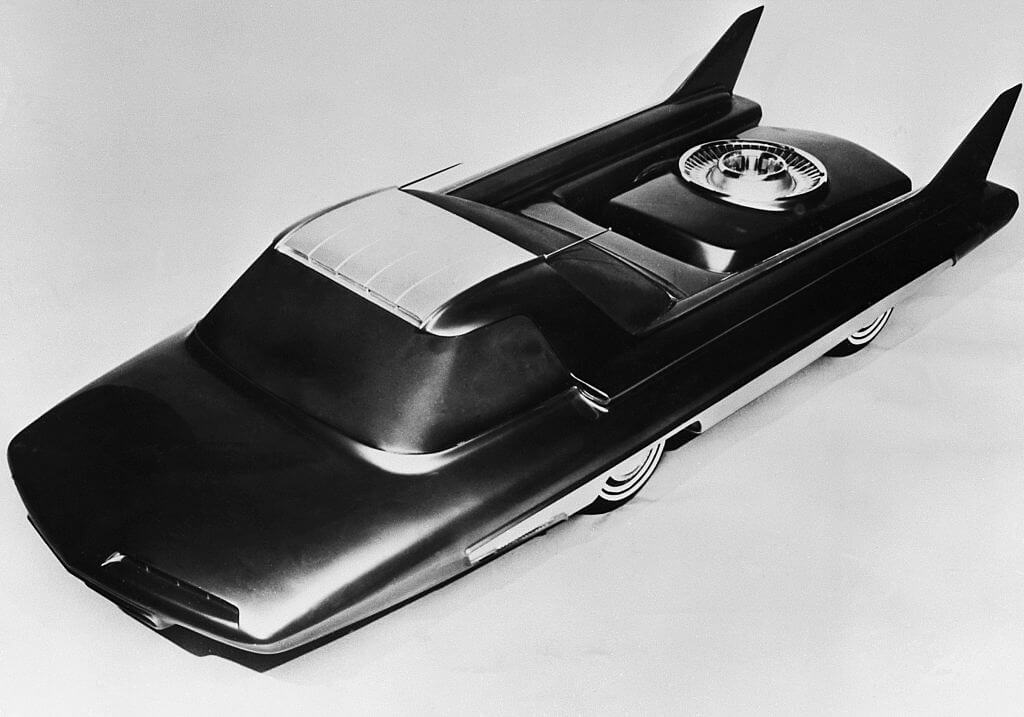
The Nucleon was to be powered by a steam engine and uranium fission, which is similar to what is used in nuclear submarines. Ford made a scale model of the vehicle, which is currently on display at the Henry Ford Museum in Dearborn, Michigan.
Mustang on Top of the Empire State Building
Pictured above is a 1965 Ford Mustang. The fastback was made in addition to two other models, the hardtop and the convertible. Ford first introduced the Mustang on April 17, 1964, at the New York World’s Fair. The following year, the company put one of its prototypes on top of the Empire State Building.
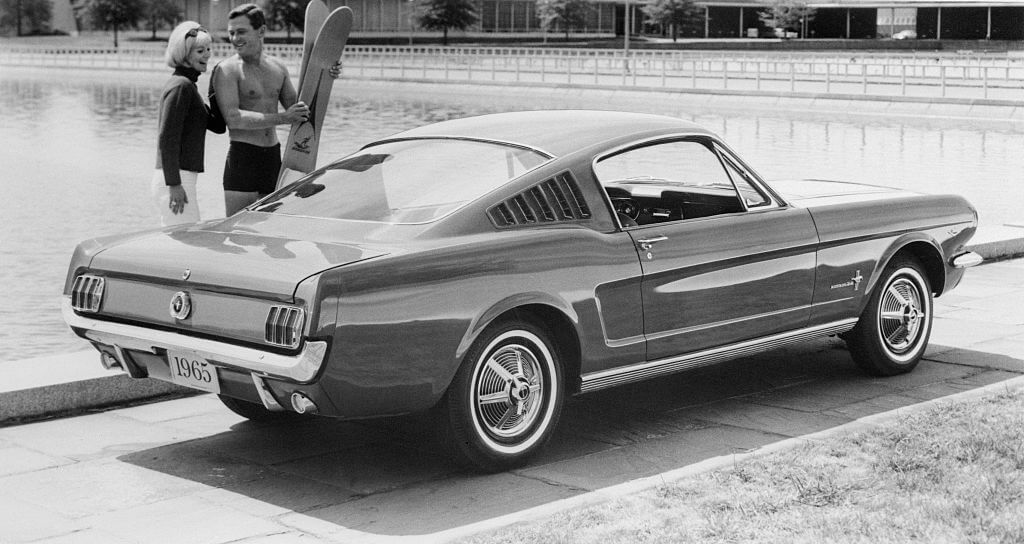
The company disassembled the vehicle by breaking it down into four pieces. Workers moved the Mustang in resident elevators to the top of the building. They reassembled it there and photographed it with a helicopter. The Mustang was then reassembled inside the building before it was taken apart and removed from the landmark site five months later.
An Arm And A Leg
There’s a common phrase you may hear now and again. If a person says something costs “an arm and a leg,” he or she means that it is very expensive. Well, Ford is reportedly responsible for coming up with the saying. The automaker was known for being generous and carefree with his money, basically saying he’d rather give up cash than his body parts.
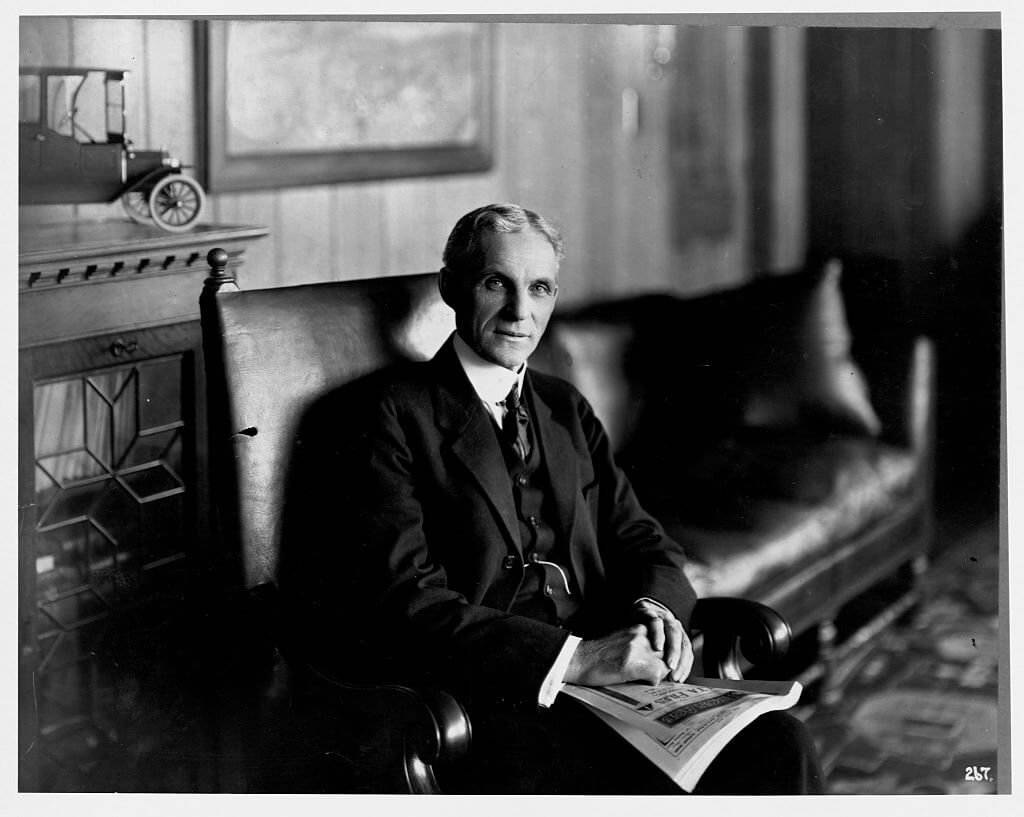
The actual quote Ford used was, “Money is like an arm or leg — use it or lose it.” When the automaker died, he donated the majority of his wealth to the Ford Foundation and left his family in charge of controlling the company.
Focusing On Trucks
Ford, which is known for its passenger cars including the Mustang, Thunderbird, Taurus, Focus, and Fusion, made a monumental decision in 2018. It announced that it will no longer produce passenger cars in North America for the following four years (excluding the Mustang).
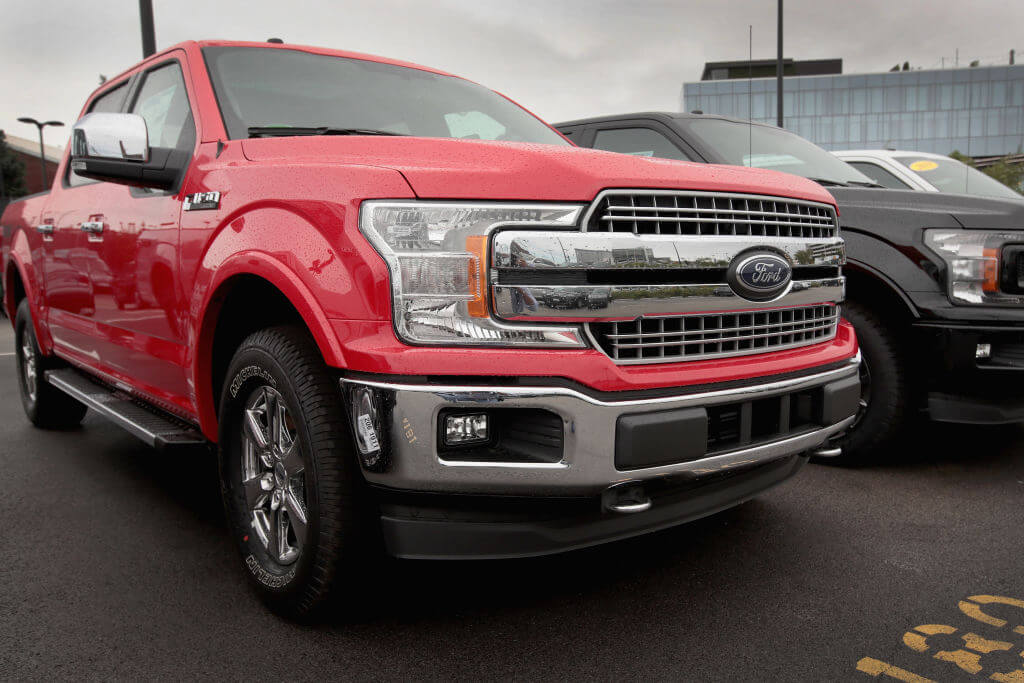
The automaker made the decision as a result of decreased demand for passenger cars and a lack of profits. In comparison, one of its flagship vehicles, the F-150 pickup truck, has been the bestselling vehicle in the United States since 1982 (the first generation was 1948). According to Auto Week, Ford sold more than 450,000 of its F-series line (one every 35 seconds) from January through June 2018.
Ford Spread Its Wings
Ford was a visionary. As an engineer and ambitious businessman, he made a lot of decisions he hoped would make his company grow and expand all over the globe. In the mid-’60s he attempted to buy the Ferrari brand but failed. That did not deter him from following his dreams.
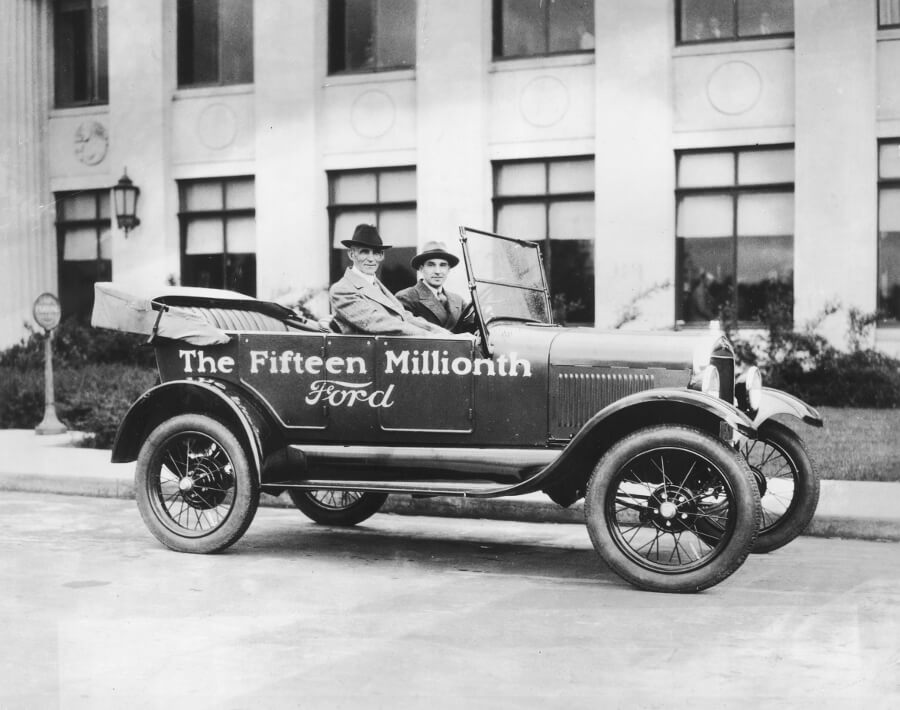
The Ford Motor Co. has since owned stakes in the following businesses: Volvo, Jaguar, Land Rover, Mazda, Mercury, and Aston Martin. These days, Ford also sells vehicles under the Lincoln brand. Meanwhile, members of the Ford family have the majority voting power in the company but minority ownership.
Brake for It / Balkantimes.press
Napomena o autorskim pravima: Dozvoljeno preuzimanje sadržaja isključivo uz navođenje linka prema stranici našeg portala sa koje je sadržaj preuzet. Stavovi izraženi u ovom tekstu autorovi su i ne odražavaju nužno uredničku politiku The Balkantimes Press.
Copyright Notice: It is allowed to download the content only by providing a link to the page of our portal from which the content was downloaded. The views expressed in this text are those of the authors and do not necessarily reflect the editorial policies of The Balkantimes Press.

